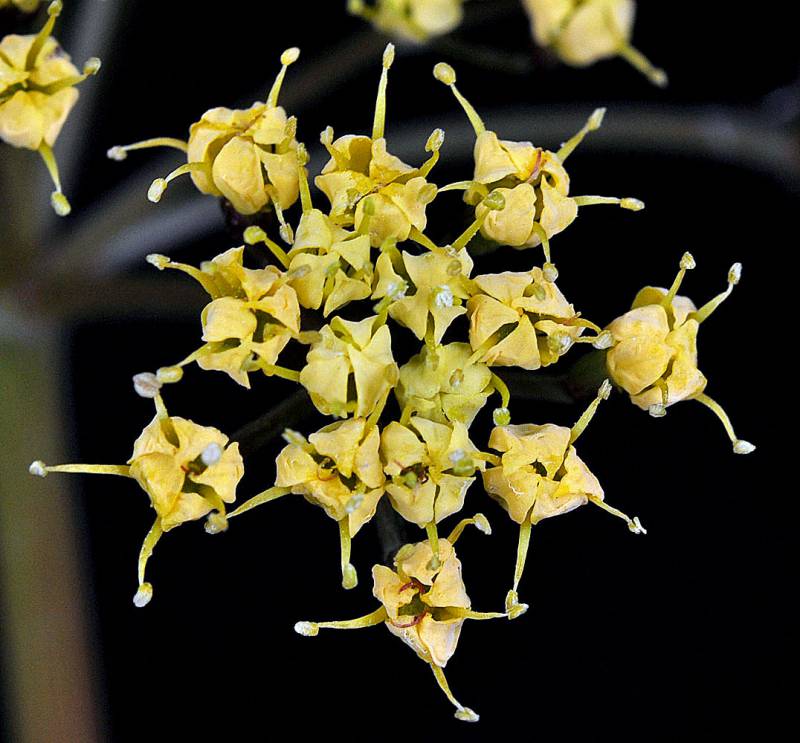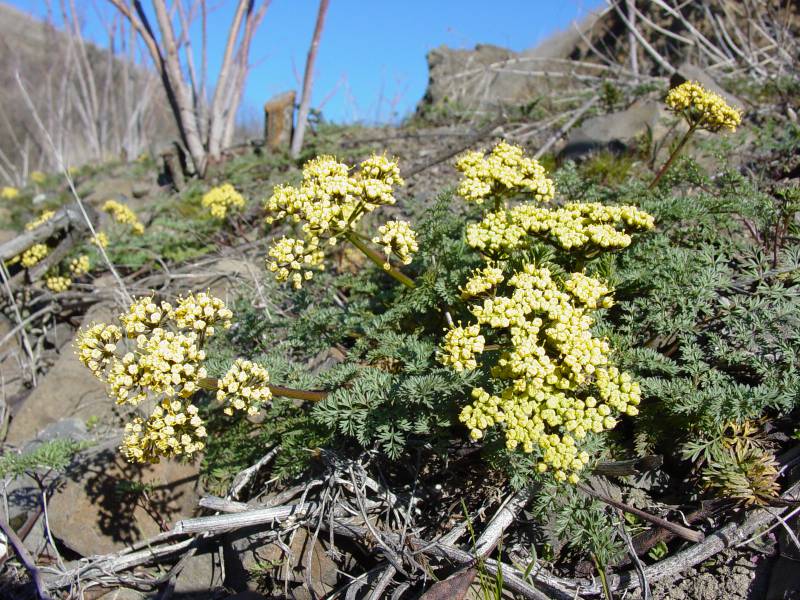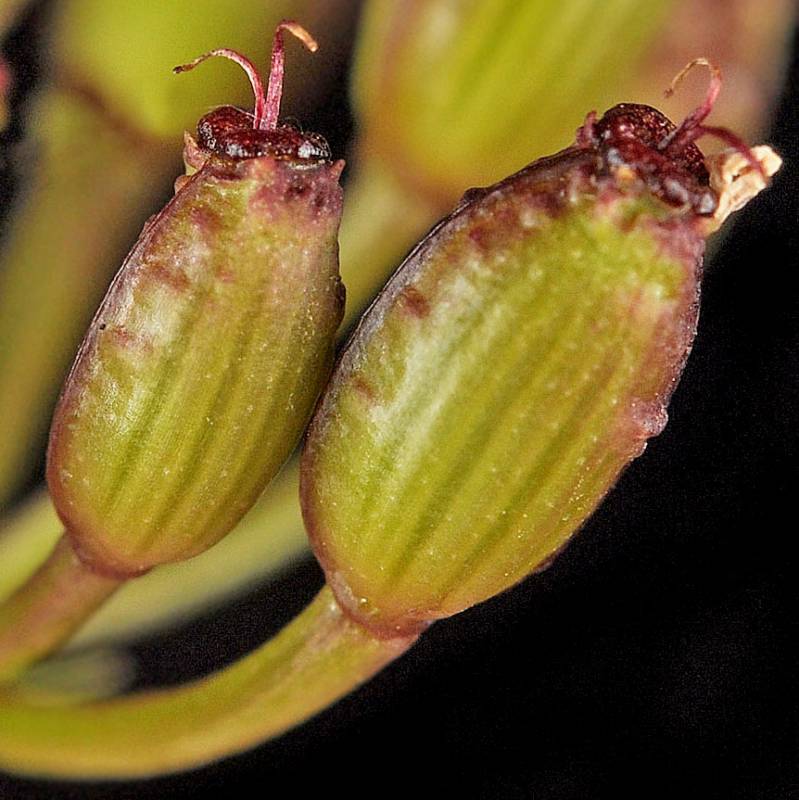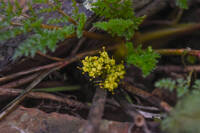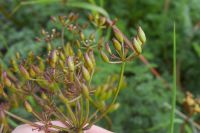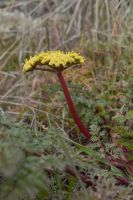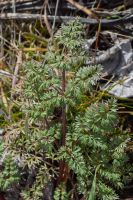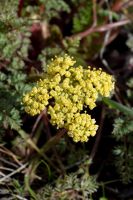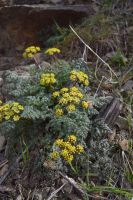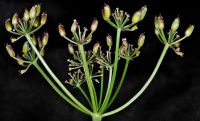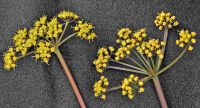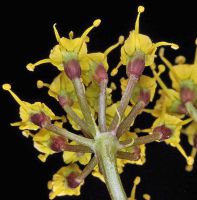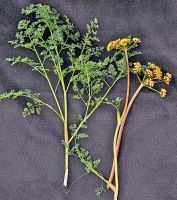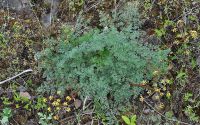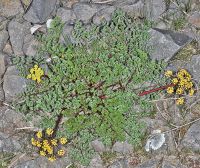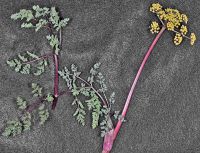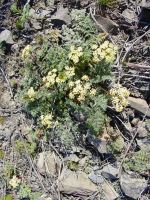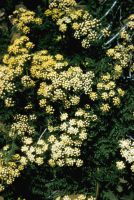Distribution: Occurring east of the Cascades crest in the southeastern counties in Washington; southeastern Washington to the Snake and Clearwater rivers in Idaho.
Habitat: Dry, open, rocky slopes.
Flowers: February-May
Origin: Native
Growth Duration: Perennial
Conservation Status: Not of concern
Pollination: Bees, flies, butterflies, beetles, wasps
Glabrous perennial from a strongly-thickened taproot, the solitary or several stems usually branched near the base, ascending, 2-6 dm. tall.
Leaves chiefly basal, ternate-pinnately dissected into very numerous small and narrow ultimate segments 1.5-5 mm. long; petiole sheathes very prominent; usually with one or more reduced leaves on the lower stem.
Inflorescence of compound umbels, the rays 5-13, unequal, 3-6 cm. long at maturity; involucre none; involucel bractlets narrow and inconspicuous; calyx teeth none, flowers salmon-colored or salmon-yellow.
Fruit elliptic-oblong to broadly elliptic, 8-14 mm. long, the lateral wings corky-thickened, 0.5-1 mm. wide; dorsal ribs slightly raised, narrower than the intervals.
Publication: Bull. Torrey Bot. Club 69(3): 246. 1942.
PNW Herbaria: Specimen records of Lomatium salmoniflorum in the Consortium of Pacific Northwest Herbaria database
WA Flora Checklist: Lomatium salmoniflorum checklist entry
OregonFlora: Lomatium salmoniflorum information
E-Flora BC: Lomatium salmoniflorum atlas page
CalPhotos: Lomatium salmoniflorum photos

